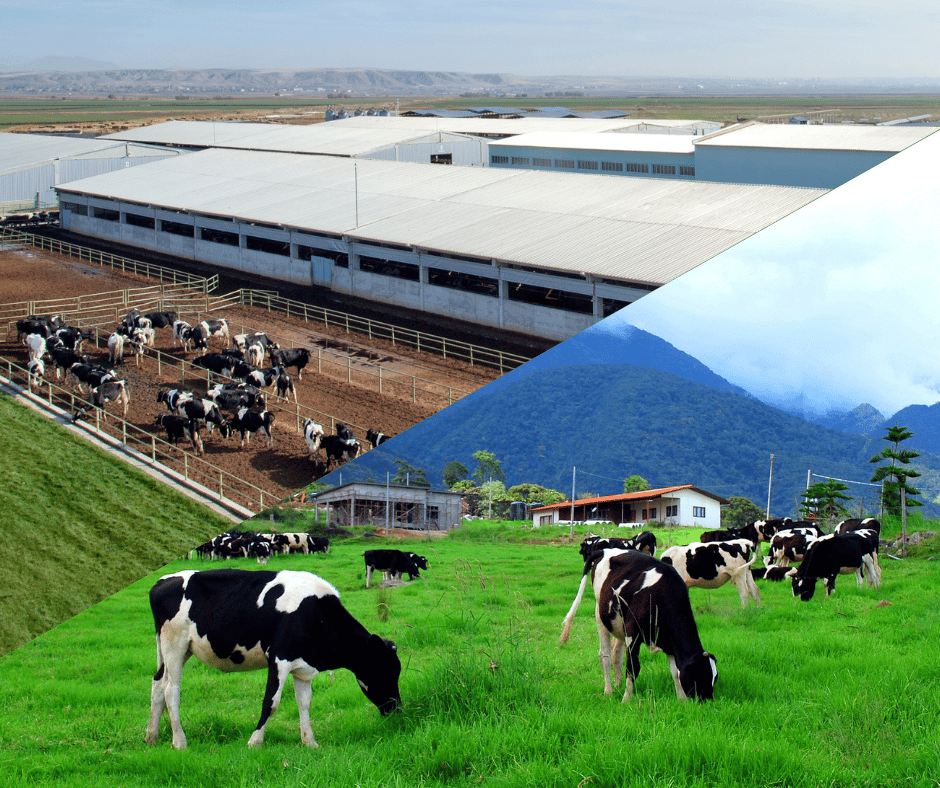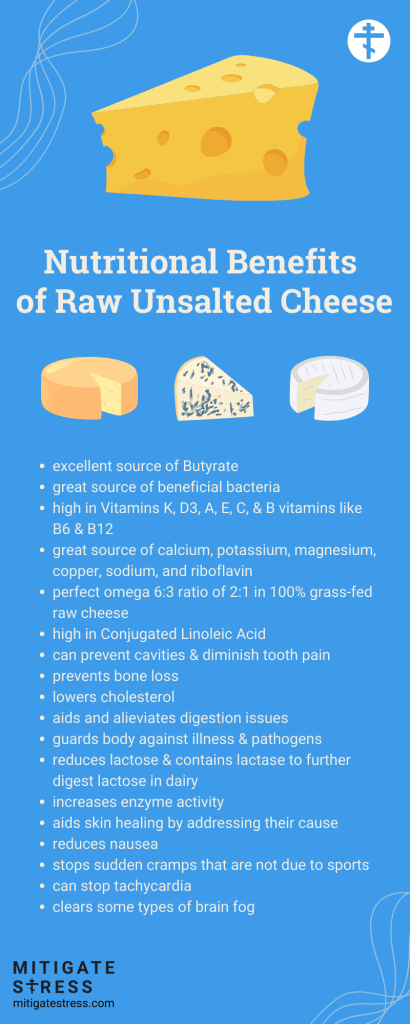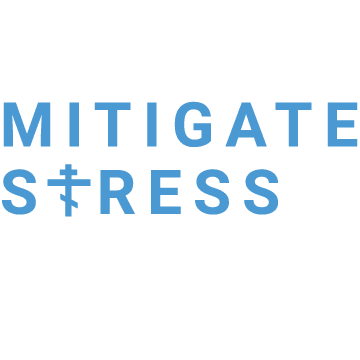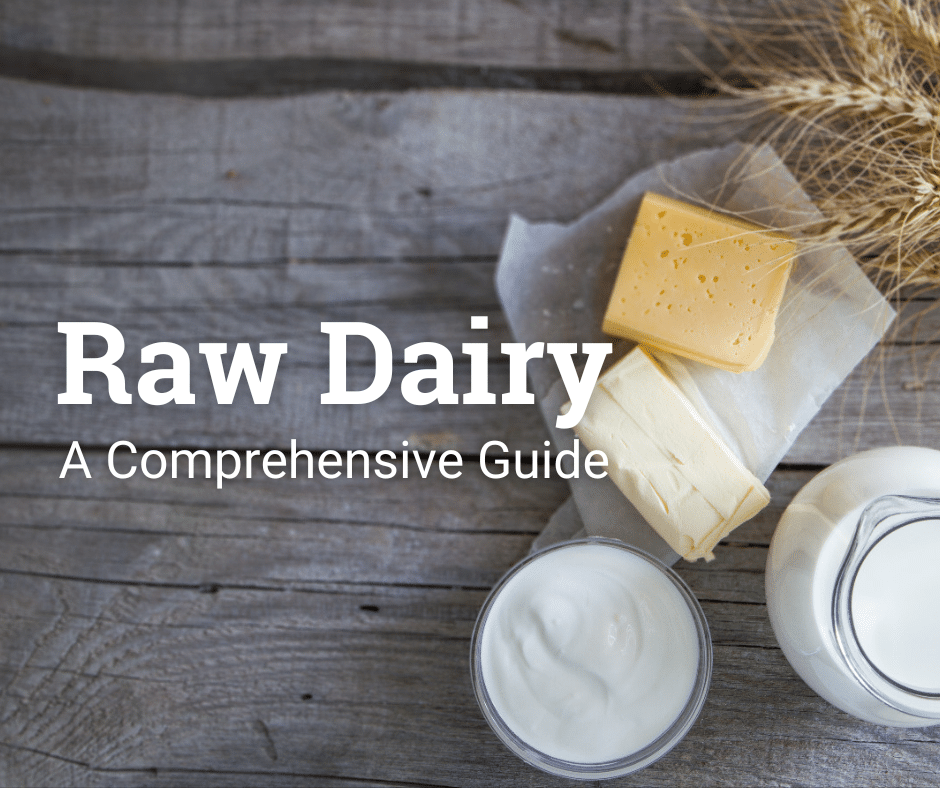Disclaimer: Raw milk and its products are not approved by the Food and Drug Administration, or FDA, due to the risk of serious infectious diseases. However, many advocates can vouch for their health benefits. If you are at risk for infection due to your age, pregnancy, or other conditions, you may want to consult your doctor before consuming raw milk or raw cheese.
Why We Choose Raw Milk
Out of all the health foods we have tried, dairy, especially cheese, has been the most controversial yet healing food in our journey thus far. Shocker, right?
The Food and Drug Administration does not approve raw milk and its products, or FDA, due to the risk of serious infectious diseases. However, advocates can vouch for their health benefits. If you are at risk for infection due to your age, pregnancy, or other conditions, you may want to consult your doctor before consuming raw milk.
The Demonization of Dairy
There are so many people who spew nonsense and demonize dairy products as if they were the worst, the most unnatural, and the vilest things ever made. The problem is that we humans tend to draw conclusions and paint everything black and white. Although we fell for the propaganda long ago, there are some half-truths to some of these claims. In other words, “don’t throw the baby out with the bath water.”
However, it’s not that simple. Dairy can either be a healing superfood or a toxic, mucus-forming substance depending on the source and how it was processed.
Dairy issues are often caused by the source and treatment of livestock. Most of the dairy products we see in the market come from cows that are shot up with hormones and antibiotics, fed grain-based diets predominantly, kept indoors, and kept sedentary for many years. This treatment leaves them without sunlight, fresh pasture, and full of stress hormones like adrenaline and cortisol. These poor animals are mistreated and left unhealthy, which, in turn, can result in you becoming unhealthy. The mainstream “studies” are hardly ever tested on unheated (raw), unadulterated, unhomogenized, unsalted, grass-fed, pasture-raised dairy.
You may want to read this article if you have been labeled “lactose intolerant” (like we once were) and are terrified of having bad reactions from dairy.
*Fun Fact* Sheep’s milk is naturally homogenized.
Wait, Raw Milk was once illegal?
Raw milk has been one of the most regulated food products in history. According to RealMilk.com, “Raw milk is the only food that regulators hold to a standard of perfection—something that is impossible to achieve. The consequent bans and limitations on raw milk sales and distribution constitute protectionism for the conventional dairy industry under the guise of measures to protect the public health.”
In the struggle for consumer dollars, raw milk is at the center. Consumers frequently buy pasteurized milk in the supermarket, leading to other purchases. Raw milk leads consumers to the farm. They purchase meat, poultry, eggs, and produce, supporting local farmers and businesses.
The F.D.A. banned raw milk and raw milk products (except for raw cheese aged 60 days) from interstate commerce 34 years ago. Unlike any other food, raw milk is allowed to be regulated by state laws and policies as a result of the ban. Raw milk laws differ from state to state around the country. However, there has been a consistent trend in states increasing access to raw milk by passing legislation, enacting regulations, or making policy changes to accommodate growing consumer demand for it for many years.
“A Campaign for Real Milk” was launched by the Weston A. Price Foundation in 1999 when farmers could legally produce raw milk for human consumption or pet consumption in 27 states. By 2021, 44 states allowed raw milk production.
Providing nutrient-dense foods like raw milk to the growing number of people who wanted it required brave individuals. Their willingness to risk and/or suffer government enforcement action led to the legalization of raw milk sales and distribution. Learn more about the people who helped legalize raw milk (one of them being Aajonus Vonderplanitz) at RealMilk.com.
It Starts With The Sourcing

In order to find good dairy products, it is crucial to pay attention to where your dairy is sourced. How well does the farmer care for his cattle? Do they let them roam freely in the green pastures during the winter? What kind of food do they feed them? What quality of water do they drink? Do they feed them synthetic food/vitamin supplements and/or inorganic minerals? Do they give them antibiotics, vaccines, and/or hormones? These are just a few questions you should ask when looking for a reputable source for your dairy, egg & meat products.
If you are ready to start searching for a clean source of nutrition near you, check out:
Things to Consider if Having Bad Reactions to Raw Dairy
In his book “We Want to Live,” Aajonus Vonderplanitz explains that cold milk often causes lactate and milk protein to pass into the blood without digestion, leading to allergic reactions. According to Aajonus, before drinking milk, it is best to warm it or allow it to stand in a dark warm cupboard for several hours. We like to let ours sit for at least 12-24 hours to allow the natural bacteria in milk to predigest it (you can let it sit for only a few hours if you desire).
When you drink cold, raw milk, you should let it swish in your mouth for several seconds until it warms up before you consume it. If you still cannot digest it well, ferment it into kefir. To make kefir, place the milk in a glass container (never ferment it in plastic), and place it in a dark spot at room temperature for 2-4 days. Pour out as much as you want to drink and put the rest in the fridge. Due to its predigested nature, kefir can be digested cold, but you should try it warm first.
Few people will be intolerant to raw warm milk or raw milk with unheated honey. A few rare individuals who, although not advised to drink milk, may be able to drink raw cream, eat no-salt-added raw cheese, and eat unsalted raw butter without difficulty because those dairy products contain very little lactose.
Aajonus recommends in “We Want to Live” that raw milk be full-fat with at least 10% cream. Raw milk facilitates digestion and utilization of minerals and protein in raw milk, which is why it is recommended for the remedy section of his book. Dairies typically skim the milk, reducing the cream content to 2-4%. Milk containing 2-4% cream is often labeled “skimmed milk.” Milk with 4-7% cream content is labeled “whole milk,” which, of course, is not full-fat. Adding raw cream to raw milk will yield a more full-fat milk. For example, you can add ½ cup of raw cream to 6 cups of raw milk to make a 15% cream content.
It is important to start slowly and lightly when reintroducing dairy if you are highly intolerant. To begin with, we recommend consuming just a teaspoon of room-temperature raw sheep or goat milk every few hours, increasing the frequency or dosage over time as your body is accustomed to it. Swish it in your mouth for a few seconds to mix it with your enzymes before swallowing. If you don’t like or want milk, you can experiment with unsalted, unheated cheese or butter instead.
If the fats reach temperatures above 104 degrees Fahrenheit, they have a greater tendency to store in the body, solidifying instead of dumping into the bowels. Raw fat, like raw butter, cleanses, lubricates, protects, and fuels the body easily. Whereas heated and pasteurized fat often stores as cellulite or other hard-to-use or non-utilizable waxy fat. Therefore, eating fats warmed above 104 degrees Fahrenheit is not recommended for optimal health.
Health or Disease? Pasteurized vs Raw Dairy
In terms of nutrition, there is no substitute for clean, raw milk since science has yet to successfully provide the essential qualities of raw milk in pasteurized milk that are the foundation of a healthy child. There is no denying the benefits of killing harmful germs, but pasteurization does more than that – it kills off beneficial microbes as well. It also destroys some essential nutrients in milk by subjecting it to high temperatures.
One of the main reasons behind the popularity of pasteurization is the widespread belief that raw milk contains harmful germs that cause tuberculosis in children. The problem of disease-carrying through milk has been studied and tested by scientists. However, they missed the most important fact that-that it was CLEAN, raw milk that is desired, not raw milk from dirty environments and animals. If this can be assured, no other food can or should replace it for children.1.
“Pasteurization began in 1895, and thus began the unfortunate habit of not worrying about cleanliness in the dairy because, with the heating of milk, cleanliness was no longer considered necessary.” 2. It was possible to sell adulterated milk after boiling the bacteria in it, killing the germs (and beneficial bacteria). As a result of pasteurization, tuberculosis did not completely disappear from cows in the United States until 1941. Milk has been sold as pasteurized milk ever since.
Dr. Royal Lee states, “Pasteurization does not lower the bacteria count of the milk as consumed, for germs grow faster in pasteurized milk than in raw, and the count, while cut down [initially] by the pasteurization, soon exceeds the figure it had before.” He concludes that pathogens enter unhealthy cells. Pasteurization kills milk cells. Pathogens then multiply rapidly in those cells. A body full of unhealthy cells will proliferate bacteria eaten from a product full of pathogens.3.
Dr. Henry Coit, the father of certified milk, understood that getting fresh milk from cows, rather than heating milk, was the key to producing top-quality milk. He noted that it was important to provide the best and most nutritious products to the public, and the best way to produce that was in a clean environment as nature made them.
Despite this, a growing group of nutritionists thinks that “American” milk is the problem with milk. In other words, when milk is processed by modern methods, it becomes a useless and potentially dangerous product. Pasteurized, homogenized milk is actually known to cause tooth decay, even though it claims to support healthy teeth. This group consists of some experienced nutritionists. “Milk may cause arteriosclerosis and thus heart attack, not because of the fat or cholesterol content, but because of the way the milk is altered by the pasteurization and homogenization processes.” They ask, “Is milk the perfect food, or is it, because of modern processing methods, a major health hazard?”2.
Aside from killing friendly bacteria, pasteurization significantly reduces milk’s nutritional value. The loss of vitamins A, D, and E in pasteurized milk is up to 66 percent, while the loss of vitamin C is usually around 50 percent. On top of pasteurization destroying vitamins B6 and B12, it also destroys enzymes, antibodies, and hormones beneficial to health. Heat alters water-soluble vitamins and can reduce their effectiveness by 38 percent to 80 percent. As a result of pasteurization, lipase (the enzyme responsible for absorbing fat) is destroyed, impairing fat metabolism and fat-soluble vitamin absorption. Because commercial milk contains diminished vitamin D levels, the dairy industry fortifies its products with it.3.
As William Campbell Douglass, Jr., M.D., documented in 1984, “considerable clinical evidence to the world that drinking pasteurized milk resulted in degrees of osteoporosis and bone malformation, diabetes, and many other diseases.”2. Moreover, he showed how consuming raw milk reversed osteoporosis, bone malformation, diabetes, and many other diseases based on clinical evidence from the same sources. Among the universities and clinics cited by him were Harvard, Princeton, Cambridge, Dartmouth, Tufts, the Washington University School of Medicine, the University of Georgia Dairy Science Department, the Ohio State University School of Agricultural Chemistry, and the Mayo Clinic.
In his testimony, he cited the following medical journals and publications that confirmed his findings: The Lancet, J.A.M.A., World Cancer Research Fund Journal, American Journal of Clinical Nutrition, New England Journal of Medicine, British Medical Journal, Consumer Reports, Consumer’s Union, Hartford’s prestigious St. Vincent’s Hospital Report, Certified Milk Magazine American Association of Medical Milk Commission Report, Milk Industry Foundation Report and The Price Pottenger Nutrition Foundation Newsletter.4.
Pediatricians discovered in the early 1900s that pasteurized milk was often to blame for colic in infants. One in five babies suffers from colic when they are fed pasteurized milk. According to a recent study, children who consume pasteurized cow’s milk are more likely to suffer from chronic constipation. According to these researchers, pasteurized milk consumption caused perianal sores and severe discomfort during defecation, which caused constipation.5.
As a result of a high mortality rate among infants suffering from gastroenteritis in 1923, Dr. Paul B. Cassidy, M.D., recommended raw milk instead of pasteurized milk. This recommendation, of course, caused the critics of raw milk to panic, as they predicted this would bring about a catastrophic rise in infant deaths. While 89 infant deaths from gastroenteritis were recorded in 1922, the number quickly fell by 94% to fewer than five deaths per year by 1940 after this recommendation.6.
Several infants were observed by Dr. Francis Pottenger, Jr., MD, whose mothers had previously given birth to children within three years of giving birth to those infants. Asthma, infantile rickets, and skeletal underdevelopment were among the previous children’s illnesses. In one experiment, a baby girl fed formula since birth always became ill and remained undersized compared to her parents’ larger builds. Several formulas were used: powdered, pasteurized, boiled, boiled certified, and canned milk. While in her infancy, she suffered severe gastric distress and developed asthma at eight months. In contrast, the healthy child was breastfed from birth. Her mother drank raw milk and lived in an environment that promoted excellent health. Pottenger concluded:
“It should be determined experimentally, if possible, whether health and resistance are undermined by pasteurization. If so, in our attempt to protect the child from milk-borne infections, we may be denying his heritage of good health by removing from his milk vitamins, hormones, and enzymes that control mineral assimilation and promote body development and general resistance to disease. Is it also possible that these same elements are as important to the adult invalid who needs milk as to the infant?”7.
More than fifty years ago, Dr. Weston A Price, D.D.S., demonstrated the health risks associated with processed milk and that processed food, such as pasteurized milk, contributes to poor facial bone growth.8. Abraham Nizel of Tufts University, author of three classic texts on dentistry and nutrition, found that teeth with dental caries and decay were four times more common among babies fed pasteurized milk than raw milk.
Pasteurization may also affect more than just the health of teeth. Before 1901, infant scurvy was rarely seen in Berlin. A large dairy set up a pasteurization plant in 1901 that heated all milk to 140°F (60°C). There were several reports of infantile scurvy throughout the city after a period of months. According to H. Neumann and two other doctors, there were 32 cases from 1896 to 1900 of infantile scurvy. In 1901 and 1902, he reported a sudden spike in the number of cases, spiking to 83 within those two years. Upon investigating the cause, pasteurization was stopped. Cases decreased as fast as they had increased. In addition to susceptibility to infection, Neumann noted that infantile scurvy caused abdominal cramps, furunculosis of the skin, nasal diphtheria, and pneumonia in advanced cases.9.
According to Dr. Hess, pasteurization of milk was ineffective at preventing humans from contracting diseases cows sometimes develop. His observations and tests suggested that infants fed pasteurized milk were more likely to contract common diseases. Milk pasteurization should be blamed for those diseases. Bovine undulant fever does not naturally transfer to humans.10.
In 1923, Dr. J. R. Crewe, founder of the Mayo Foundation, reported that raw milk had therapeutic benefits, emphasizing that raw milk is the key factor in healing. In his opinion, raw milk is widely used and recommended in diets but rarely used as an agent for disease treatment. Using raw milk diets for 15 years, he achieved “uniformly excellent” healing. His raw-milk therapy brought rapid improvement to his patients with pulmonary tuberculosis. This was ironic, considering that raw milk was blamed at the time for tuberculosis. Even the Greek physician Hippocrates used raw milk to treat tuberculosis.11.
In May 1937, an article in The Lancet reported that children fed raw milk instead of pasteurized milk had greater resistance to tuberculosis. This reduced pulmonary tuberculosis cases to only one in five years, whereas 14 cases occurred when children were fed pasteurized milk in the previous five years.12.
Also shown in The Lancet, page 1142, May 8, 1937, raw milk rather than pasteurized milk virtually eliminates chilblains (because it has higher calcium values).12.Itching, red patches, swelling, blisters, and itching are common symptoms of chilblains, a painful inflammation of small blood vessels in your skin caused by repeated exposure to relatively cold air.
It was reported in 1941 by investigators that guinea pigs fed raw milk with powdered skim milk, copper and iron salts, carotene, and orange juice developed well and did not exhibit any abnormalities during autopsy. Deficiency symptoms began manifesting when pasteurized whole milk was used, with wrist stiffness being the first sign of a deficiency. When skim milk was substituted for whole milk, the deficiency intensified, resulting in increased emaciation and weakness before death. Even though the animals showed little tendency toward the paralysis of the limbs and remained in a normal posture, it was found during autopsy that the muscles had become extremely atrophied. Fine lines of fine calcification were observed parallel to the fibers of their muscles, and calcification was also found in various other parts of the body. During the tests, paralysis also developed quickly when cod liver oil replaced carotene in the skim milk diets. “The feeding of raw cream cured the wrist stiffness.”13.
According to the CDC, there are approximately 48 million foodborne illnesses diagnosed each year, of which only 42 (about 0.0005 percent) can be linked to raw milk consumption.14.
In reality, pasteurization does not protect us from pathogens. It degrades quality dairy from farmers who love their work. Farmers should be allowed to produce clean raw milk without interference from the government. This would be much more beneficial than forcing dairies to set up expensive machinery to turn raw milk into something adulterated and less nutritious. Health benefits and quality are well-documented and gaining recognition across the country. The only ones with the solution are the local farmers who put quality first. Utilize their resources and get to know them.
Find a raw milk farmer at https://www.realmilk.com/
Nutritional Benefits of Raw Cheese
Raw cheese is a powerhouse of nutrition. It is rich in colloidal minerals and beneficial bacteria.

As a result of its natural probiotic content, raw cheese has many health benefits. It contains beneficial bacteria that promote digestive health and immune function. Probiotics are especially prevalent in goat, sheep, and A2 cow soft cheeses, particularly thermophillus, bifudus, bulgaricus, and acidophilus.
Because of the probiotic properties of raw cheese, it is an excellent source of butyrate, a short-chain fatty acid with many benefits to the body. Butyrate fuels our gut lining and supports colon immune function. It protects the liver, pancreas, and heart and contains anti-cancerous properties. It also prevents certain digestive tract diseases.
It is also significant to note that raw milk and its cheeses contain healthy bacteria that colonize the digestive tract and compete for nutrients with undesirable pathogens. According to Macalester College, St. Paul, Minnesota’s Department of Environmental Studies, this prevents the growth of pathogens and reduces the risk of infection. However, a person with a lowered immune system may become infected by bacteria in raw milk and cheese, so it is always recommended to talk to your healthcare practitioner before introducing this into your diet.
The mineral content of cheese is very high, with forms used for most metabolic functions and tissue-forming processes. In raw cheese, Vitamins K2, D3, and Calcium combine in a synergistic blend of nutrients that protect your bones, brain, and heart. It is also high in Vitamins A and E. Cheese also contains Potassium, Magnesium, Zinc, Selenium, Copper, Naturally Occurring Sodium, B12, and Riboflavin.
There is a perfect omega 6:3 ratio of 2:1 in 100% grass-fed raw cheese and 5x the amount of Conjugated Linoleic Acid (CLA), a cancer-fighting nutrient. Besides increasing metabolism and fat burning, CLA also enhances the body’s natural immunity. Cheese from grain-fed cows is higher in Omega-6 fatty acids, disrupting that perfect omega ratio.
According to researchers, cheese can help prevent cavities. Cheese increases saliva alkalinity in the mouth and stimulates saliva flow, which reduces dental treatment needs. The alkaline nature of saliva buffers plaque acids. Cheese-stimulated saliva also dilutes sugar, increasing sugar clearance. As a result, cheese minimizes the need for dental treatment by neutralizing plaque acid in the mouth and creating a protective film around the teeth.
As Sally Fallon Morell points out in Nourishing Traditions, consuming raw cheese benefits the body by preventing bone loss and lowering cholesterol levels. By providing beneficial bacteria and lactic acid to the digestive system, it also guards the body against illnesses and pathogens. Fermentation increases vitamin B and C content as well. A large portion of lactose in milk is converted into lactic acid, which aids digestion. It also contains lactase, which aids the digestion of lactose in the digestive tract. Digestion is also improved by increasing enzyme activity.
In his vast amount of research, Aajonus Vonderplanitz adds to the list the following benefits:
- Solves many digestion issues
- Heals skin issues by addressing their cause
- Reduces nausea
- Diminishes teeth pain
- Stops sudden cramps that are not due to sports
- Can stop tachycardia
- Clears some types of brain-fog
A 2007 Clinical and Experimental Allergy study shows that raw milk can reduce asthma and hay fever symptoms. According to the study, children who consumed raw milk and milk products had a lower risk of developing asthma or hay fever than those who ate pasteurized milk products. Despite the positive results, scientists concluded that longer-term studies are needed.
The list of benefits of raw cheese is one of the longest for only a single food.
Raw grass-fed cheese has a much better flavor and texture than pasteurized and processed cheeses. Raw cheese is excellent when eaten with raw honey and raw fruit, which helps with digestion further and uses its nutrients to heal and restore metabolic processes.
The Detoxification Support of Raw Cheese
A growing number of people are unaware that unsalted raw cheese is a necessity in today’s increasingly toxic world. It contains many nutrients, including bioavailable minerals and fat-soluble vitamins. As a result of its high mineral content, raw cheese chelates toxins better than any other protocol without side effects or chances of heavy metals returning to the body. Compared to other protocols, raw cheese relieves symptoms faster, lessens symptoms, and sometimes relieves them within minutes. It is highly important, however, that the cheese be raw and unsalted for detoxification support, as salt inhibits the health benefits.
Although the liver and kidneys automatically detoxify and excrete metabolic wastes, we often fail to realize that they cannot handle the more than 20,000 foreign industrial chemicals that exist today. How do we know everyone is holding on to an obscene amount of toxicity? Simple, you can measure it through a variety of tissue analyses.
Unsalted raw cheeses act like a sponge to absorb the toxins in your digestive tract. Similar to clay, cheese contains concentrations of minerals that bind with radicals and toxins that the body dumps into the stomach and intestines. These toxins include heavy metals, pesticides, airborne pollutants and contaminants, industrial chemicals, detergents, solvents, and other undesirable foreign bodies. Our focus should be on fighting chemicals and toxic substances, not pathogens.
As the toxins pass through the stomach and intestines, cheese draws them from the blood, nervous, and lymphatic systems. Because it absorbs toxins in the digestive tract, unsalted raw cheese can be a great way to relieve nausea. It’s an all-purpose binder that is better than clay and activated charcoal.
Raw cheese by itself is not digestible since it lacks most bioactive enzymes. Because of this, it can cause dehydration and, therefore, constipation, according to the book “We Want to Live!” by Aajonus. Eating raw honey, raw fruit, or raw fats, such as coconut cream or raw butter, will supply the body with the enzymes needed to avoid constipation. Unsalted raw cheese will absorb toxins, but if you consume raw honey with your cheese, the enzymes of the honey will allow your body to absorb the bioavailable minerals and protein from the cheese.
It takes approximately 50-200 molecules of fat or minerals to remove a single mercury atom, from binding and neutralizing it to acting as a vessel to escort it out. Only cheese can produce this at such a high level. Raw cheese ‘adsorbs’ a wide array of toxins slowly over time but only works consistently and effectively as long as you consistently eat it throughout the day as often as you feel you need (read below about food timing).
Even in high amounts, drinking raw milk cannot compare to the benefits of raw cheese, especially in today’s world. It is believed that cheese’s concentration is ten times more potent than milk’s when nourishing the body and eliminating metals and chemicals through the digestive tract. This would make sense because cheese is technically concentrated milk.
When referring to using raw, unsalted cheese to draw out toxins from the body, Healthfully.shop states, “The genesis of this very novel method came from analyzing the toxins embedded from eating beef jerky in the first place, then experimenting with other dry foods, ultimately discovering raw unsalted cheese is the most effective one.”
Why Should Raw Cheese Contain No Salt?
Salt inhibits many of cheese’s health benefits. Metals and toxins are effectively bound by raw and unsalted cheese, whereas salted and pasteurized cheese does not bind to those metals or toxins. Salt fractionates cheese during digestion, while cooking temperatures destroy ionic bonds between molecules. The natural sodium found in cheese is not the same as the sodium contained in your table salts; it is contained within the nutrients and acts differently and harmoniously.
According to Aajonus Vonderplanitz’s research and vast experience, the craving for salt is symptomatic of a mineral deficiency. To satisfy your craving for salt, he suggests eating any or all of these foods: fresh raw tomatoes, no-salt-added raw cheeses, fresh celery juice, and raw fish (avoid celery if you have high sun exposure due to the furanocoumarins causing the skin to be photosensitive). Eating raw shellfish, like oysters and clams, several times a month is particularly effective in correcting a mineral deficiency quickly. These foods supply a concentrated balance of minerals that the body can utilize efficiently and pleasurably.
Food Timing
Consuming unsalted raw cheese throughout the day is beneficial in preventing many unwanted symptoms.
Shakiness often indicates that your blood protein level is too low, so eating raw cheese – a fat containing concentrated minerals – can usually help. A common cause of depression is low blood sugar. Eat fresh fruit, raw fat (like raw cheese), and cooked starches.
Suppose you are irritable, anxious, impatient, or hyperactive. Two things could cause that: either you overproduce adrenaline and/or other stimulants or have so little blood fat that your own acids irritate your nerves. Consume cooked starches with lots of raw fat and cheese.
Symptoms such as headaches, nausea, and lack of appetite are signs that your blood is toxic or too acidic. Eat some unsalted raw cheese, and drink unheated lemon or lime juice with honey and naturally carbonated water.
The Cheese Train: Using Unsalted Raw Cheese to Detox
While you sleep or rest, toxins are dumped into the stomach and intestines to be absorbed by the nutrients from your food. Immediately upon rising, it helps to consume roughly 2.5 tablespoons of cheese. Depending on your height, you may want more or less. This helps to absorb toxicity and protect the nutrients in the next meal you consume. It’s best to eat cheese roughly 10 minutes before most meals.
Raw unsalted cheese is one of the best absorbers of toxins. If you eat half a teaspoon of raw unsalted cheese every 15 minutes of the day or as often as possible, you will absorb massive amounts of toxins. Consequently, a lot of toxins are redirected into the intestines to be absorbed by the cheese. This process is known as the “Cheese Train” since the stomach dumps toxins several times per day into the digestive system.
To perform a “Cheese Train” detox protocol, consume cheese cubes regularly throughout the day, whether for two hours, one hour, or fifteen minutes. If you feel a strong craving for cheese, it means that toxin dumping is occurring, and you should increase consumption immediately. To absorb toxins in the gut and to provide a healthy digestive environment for the food passing through, it is recommended to do this for 10 minutes before meals.
Combining this with hot baths for 35+ minutes is highly recommended. However, too long of a bath can create more stress if your body fat percentage is too low.
Final Thoughts on the Detoxification Support of Raw Cheese
Any completely isolated mineral is considered a free radical and can damage the body. Minerals must be bound in food. Most supplements produced in the industry undergo chemical processes that not only isolate them but also saturate them with toxins such as petro-chemical solvents (kerosene or hexane) used during the extraction process, even if obtained from a natural source. Often the energy you experience from supplements comes from an adrenaline response. Getting your nutrition from food, water-based mineral drinks like our Master Mineral Drink, and shilajit is better.
We have personally experienced incredible relief from both acute and chronic symptoms when we eat raw unsalted cheese frequently. Whether we eat out at an unhealthy restaurant, suffer from EMF Radiation poisoning, or perhaps inhale too many fumes, chemicals, or pollutants, we have found that cheese is an excellent solution to all these problems. It has helped us tremendously with our health journey, and the more we stay consistent with it, the better we feel. Week after week, the results continue to blow us away.
Resources:
Why We Choose Raw Milk
- Sheep Milk – Amos Miller Organic Farm. amosmillerorganicfarm.com/product/sheep-milk-glass/. Accessed 15 Sept. 2022.
- “Raw Milk Cases.” Real Milk, www.realmilk.com/raw-milk-cases/. Accessed 15 Sept. 2022.
- Aajonus Vonderplanitz. We Want to Live. Santa Monica, Ca, Carnelian Bay Castle Press, 1997.
- “We Want to Live.” Reader.aajonus.org, reader.aajonus.org/we-want-to-live/. Accessed 15 Sept. 2022.
Health or Disease? Pasteurized vs. Raw Dairy
- Milk, Real. “Raw Milk vs. Pasteurized Milk.” Real Milk, 1 Jan. 2000, www.realmilk.com/raw-milk-vs-pasteurized-milk/. Accessed 16 Nov. 2022.
- The Milk Book; How Science Is Destroying Nature’s Nearly Perfect Food, Wm. Campbell Douglass, Jr., MD, 1996, Second Opinion Publishing, Georgia; pp. 204.
- The Battlefront for Better Nutrition – Selene River Press. www.seleneriverpress.com/historical/battlefront-for-better-nutrition/. Accessed 5 Nov. 2022.
- Vonderplanitz, Aajonus. The Recipe for Living without Disease. Santa Monica, Carnelian Bay Castle Press, 2002.
- Iacono G, Cavataio F, Montalto G, Florena A, Tumminello M, Soresi M, Notarbartolo A, Carroccio A. Intolerance of cow’s milk and chronic constipation in children. N Engl J Med. 1998 Oct 15;339(16):1100-4. doi: 10.1056/NEJM199810153391602. PMID: 9770556.
- Annual Convention, Certified Milk Producers Association, Hotel Roosevelt, New York City, February 8, 1938.
- Pottenger, F. M. Jr., “Clinical and experimental evidence of growth factors in raw milk,” Certified Milk, January, 1937.
- Weston Andrew Price. Nutrition and Physical Degeneration. Lemon Grove, Ca Price-Pottenger, 2016.
- HESS, ALFRED F. “INFANTILE SCURVY.” American Journal of Diseases of Children, vol. 14, no. 5, 1 Nov. 1917, p. 337, 10.1001/archpedi.1917.01910110018002. Accessed 30 Oct. 2022.
- HESS, ALFRED F. “RECENT ADVANCES in KNOWLEDGE of SCURVY and the ANTISCORBUTIC VITAMIN.” Journal of the American Medical Association, vol. 98, no. 17, 23 Apr. 1932, pp. 1429–1433, jamanetwork.com/journals/jama/article-abstract/279338, 10.1001/jama.1932.02730430005002. Accessed 31 Oct. 2022.
- Crewe, J. R. Certified Milk, Jan. 1929.
- Abstracts on the Effect of Pasteurization on the Nutritional Value of …. https://www.realmilk.com/abstracts-on-the-effect-of-pasteurization/
- James Murray Luck, and James. Annual Review of Biochemistry. 1944.
- CDC. “Raw Milk Questions and Answers.” Centers for Disease Control and Prevention, 28 Jan. 2022, www.cdc.gov/foodsafety/rawmilk/raw-milk-questions-and-answers.html#history. Accessed 17 Nov. 2022.
Nutritional Benefits of Raw Cheese
- “Health Benefits of Raw Cheese.” Decent Propaganda, 7 Jan. 2019, decentpropaganda.com/health-benefits-of-raw-cheese/.
- Academy of General Dentistry. “Cheese may prevent cavities.” ScienceDaily. ScienceDaily, 5 June 2013. <www.sciencedaily.com/releases/2013/06/130605130118.htm>.
- Unpasteurized Cheese Benefits – Destination Healthy Foods. https://www.destination-healthy-foodsa.com/Unpasteurized-Cheese.html
- Fallon, Sally, et al. Nourishing Traditions: The Cookbook That Challenges Politically Correct Nutrition and the Diet Dictocrats. Washington, Dc, Newtrends Publishing, Inc, 2005.
- “Health Benefits of Raw Milk Cheeses.” LIVESTRONG.COM, www.livestrong.com/article/430444-health-benefits-of-raw-milk-cheeses/.
- ”Raw Milk: Weighing Risks and Benefits.” The Western Producer, 2 May 2014, www.producer.com/news/raw-milk-weighing-risks-and-benefits/. Accessed 26 Sept. 2022.
- “Macalester College Environmental Studies Department.” Web.archive.org, 22 Nov. 2014, web.archive.org/web/20141122204255/www.macalester.edu/academics/environmentalstudies/students/projects/citizenscience2010/foodsafety/index.html. Accessed 20 Sept. 2022.
- “We Want to Live.” Reader.aajonus.org, reader.aajonus.org/we-want-to-live/. Accessed 20 Sept. 2022.
- Healthfully Shop: Raw Unsalted Cheese. https://www.healthfully.shop/product/raw-unsalted-cheese
- Vonderplanitz, Aajonus. The Recipe for Living without Disease. Santa Monica, Carnelian Bay Castle Press, 2002.
- “Benefits of Raw Cheese – Why Raw Cheese Is so Great.” Traditional Cooking School by GNOWFGLINS, 13 Jan. 2010, traditionalcookingschool.com/fermenting-and-culturing/raw-cheese-benefits/.
Detoxification Support of Raw Cheese
- “We Want to Live.” Reader.aajonus.org, reader.aajonus.org/we-want-to-live/. Accessed 20 Sept. 2022.
- Healthfully Shop: Raw Unsalted Cheese. https://www.healthfully.shop/product/raw-unsalted-cheese
- The Recipe For Living Without Disease: By Aajonus Vonderplanitz
- “Benefits of Raw Cheese – Why Raw Cheese Is so Great.” Traditional Cooking School by GNOWFGLINS, 13 Jan. 2010, traditionalcookingschool.com/fermenting-and-culturing/raw-cheese-benefits/.






How do you store the cheese in the frig and freezer, can you dice it and store it like that?
How do you make raw cheese?
Could you share the recipe?
Thank you.